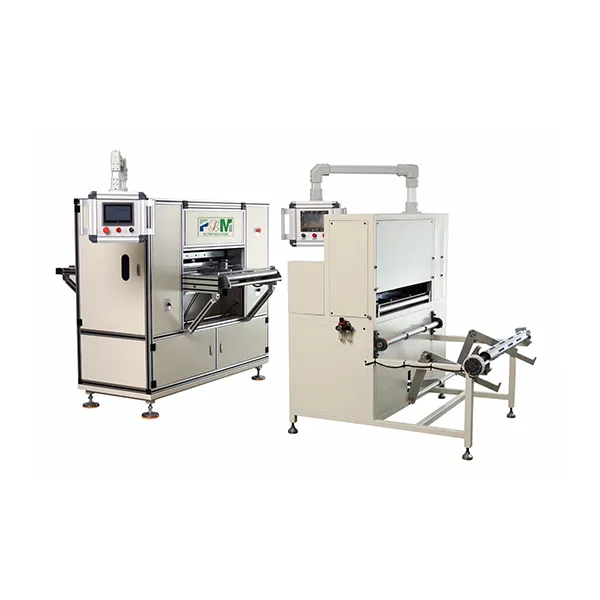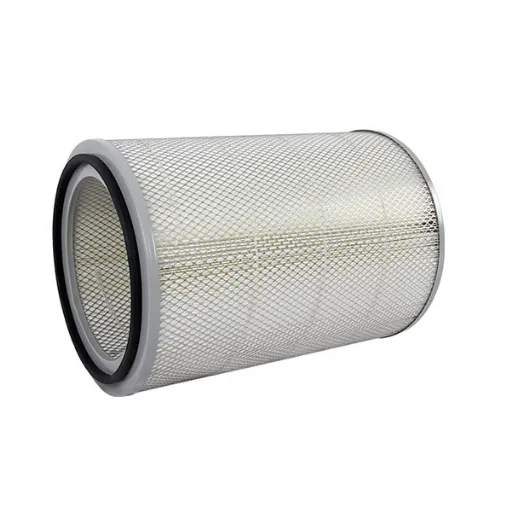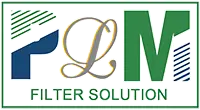7 月 . 07, 2025 08:52 Back to list
High-Efficiency Paper Pleating Machine for Filters Trusted Filter Paper Pleating Machine Company
- Introduction to paper pleating machine
technology and global demand surge - Major advances enhancing filter production efficiency
- Comparative analysis: Leading filter paper pleating machine companies
- The spectrum of filter paper pleating machine products available
- Customization and innovation: Tailoring machines to specific sector needs
- Real-world applications and success stories from various industries
- Final thoughts on selecting the right paper pleating machine solution

(paper pleating machine)
Embracing Paper Pleating Machine Innovation in Modern Manufacturing
The global demand for filter media continues to rise at an unprecedented rate, with current market analyses revealing that the filtration sector is forecast to grow by 6.3% annually through 2028. Central to this expansion is the transformative power of paper pleating machines, which are elevating the speed, precision, and repeatability of filter production. The technology behind these machines has advanced rapidly, keeping pace with the increasingly stringent purity and efficiency standards across industries such as automotive, pharmaceuticals, HVAC, and food processing. More than ever, businesses are seeking automated solutions that not only minimize human error but also optimize throughput — solutions that modern pleating equipment delivers by integrating IoT monitoring, servo-driven mechanics, and touch-screen controls.
In recent years, analysts have observed a 25% reduction in labor costs and a 30% increase in output capacity for manufacturers employing next-generation pleating machinery. The diverse nature of filter paper pleating machine products — from rotary and knife pleaters to high-speed accordion systems — ensures that even the most nuanced filtration requirements can be met. Industry 4.0 connectivity features have enabled real-time diagnostics, remote upgrades, and predictive maintenance, which further contribution to production reliability. As decision-makers face increasing market competition, the understanding of these technical gains becomes crucial for maintaining a robust manufacturing edge.
Technological Advancements in Filter Paper Pleating Machines
Technical leadership has become the hallmark of successful filter paper pleating machine companies. Some of the notable advancements include adaptive folding algorithms that automatically detect media thickness and composition, ultrasonically welded seams for zero-defect lamination, and modular design enabling quick tooling swaps. The integration of CNC control and multi-axis electronics allows for changeover times of less than 10 minutes and micron-accurate pleat spacing. Statistical data illustrates that such upgrades yield a 7% improvement in pleat uniformity and up to 40% longer filter lifespan.
Furthermore, energy efficiency remains a focal consideration; modern pleaters consume up to 18% less power due to regenerative drive technology and precision-guided motors. PLC-based process control not only safeguards consistency but also facilitates compliance with ISO 16890 and ASHRAE 52.2 standards, necessary for global market access. Companies investing in research and development are focusing on intelligent automation — enabling operators to pre-set production recipes, track productivity metrics, and instantly troubleshoot faults via touchscreen interfaces. As a result, the latest pleating solutions are positioned as smart assets within the filtration production value chain.
Comparing Leading Filter Paper Pleating Machine Companies
The proliferation of filter paper pleating machine companies worldwide has spurred competition in innovation, support, and price-performance balance. For buyers evaluating suppliers, detailed comparative assessment becomes imperative. The following table benchmarks three global leaders based on key performance indicators:
| Company | Annual Output (units) | Automation Level | Average Downtime (min/day) | Global Installations | Warranty (years) | Customization Options |
|---|---|---|---|---|---|---|
| ProPleat Solutions | 420 | High (fully automated) | 10 | 3000+ | 3 | Comprehensive (bespoke modules) |
| MaxiFiltration Tech | 390 | Medium-High | 13 | 1800+ | 2 | Standard (upgrade kits) |
| CleanStream Engineers | 265 | High (IoT integrated) | 7 | 1200+ | 5 | Extensive (software + hardware) |
As shown, the selection hinges on the interplay between advanced automation, minimal downtime, warranty assurance, and the breadth of customization available. End users increasingly prioritize not just machine performance, but the long-term partnership and innovation offered by the manufacturer.
The Breadth of Filter Paper Pleating Machine Products
An impressive spectrum of filter paper pleating machine products exists for various throughput and media versatility requirements. Knife pleaters are preferred for their adaptiveness in automotive and synthetic media, while rotary pleaters dominate in high-speed air and liquid filter applications due to their continuous operation. Mini pleating technologies, on the other hand, are sought after for HEPA and ULPA filter fabrications in the cleanroom sector. Crosswise, products are available with single or multi-lane pleat mechanisms, equipped to deliver up to 300 pleats per minute on widths ranging from 5mm to over 100mm.
A notable trend involves the growing preference for servo-driven pleating attachments, modular adhesive dispensers, and automated stackers that integrate seamlessly upstream and downstream. Machines now accommodate a wide array of filter media — cellulose, glass fibre, PTFE, and non-wovens — and enable hot-melt or ultrasonic bonding tailored to precise application needs. This flexibility supports manufacturers aiming to scale up operations or pivot to niche filter markets without major capital reinvestment.
Customization and Sector-Specific Innovation
Highly differentiated demand across industries has motivated suppliers of filter paper pleating machinery to excel in customization. OEM clients often specify web width, pleat height variance, grouping features, and adhesive application method as key variables. For instance, pharmaceutical-grade machines typically feature stainless steel builds, full enclosure, and real-time particle monitoring; by contrast, automotive filter lines stress high-speed performance and rapid changeover capability.
The inclusion of software configurators enables rapid prototyping and simulation of machine cycles prior to commissioning. Smart sensors and predictive analytics ensure preventative maintenance, which reduces unscheduled downtime by 20%. Manufacturers provide CAD-integrated design support and customer-specific PLC programming, which minimize startup lead times and accelerate ROI. As customer expectations for filter efficiency and regulatory compliance intensify, the need for tailored solutions continues to grow.
Deployment Successes: Real-World Application Cases
Filter production environments worldwide attest to the transformative impact of modern pleating equipment. For example, a leading automotive filter OEM reported a throughput increase from 60,000 to 81,500 filter elements per month after upgrading to a modular servo-driven system, while simultaneously cutting defective rates by over 12%. In the pharmaceutical sector, implementation of compact mini pleaters facilitated the fabrication of medical-grade filtration filters that meet US and EU pharmacopeia requirements.
HVAC filter manufacturers highlight the strategic importance of multi-format machinery: a mid-sized enterprise in Southeast Asia saw scrap reduction by 18% and trimmed setup times from 90 to 35 minutes after installing a custom rotary pleater with in-line slitting and stacking. Meanwhile, food and beverage processors have leveraged ultrasonic gluing features for seamless filter seam closure, thus ensuring product purity and longevity. These cases emphasize the adaptability and immediate productivity gains realized across disparate application landscapes.
The Strategic Choice of Paper Pleating Machine Solutions
Selecting the ideal paper pleating machine is a pivotal investment that shapes a manufacturer’s competitive outlook. As shown, evaluating the technical flexibilities, after-sales support, and proven integration experience of each provider is essential. Whether pursuing standard or highly customized systems, buyers should prioritize robust automation, scalable design, and reliable performance parameters. Global market dynamics and performance benchmarks underline the importance of informed supplier selection in transforming operational efficiency and cost metrics.
For organizations striving to lead in the filtration sector, partnering with an industry-proven supplier of filter paper pleating machine products offers a tangible path to greater quality assurance, regulatory compliance, and production scalability. The emerging trend of data-driven, smart manufacturing continues to redefine expectations—making the right machine investment vital for sustainable success.

(paper pleating machine)
FAQS on paper pleating machine
Q: What is a paper pleating machine?
A: A paper pleating machine is a device used to create pleats or folds in various types of filter paper. This process increases the surface area and efficiency of filter materials. It's commonly used in industries like automotive, HVAC, and water filtration.Q: How do I choose a reliable filter paper pleating machine company?
A: Look for filter paper pleating machine companies with solid industry experience, customer reviews, and certifications. Check whether they provide after-sales support and technical assistance. Comparing product range and customization options is also important.Q: What are the main products offered by filter paper pleating machine companies?
A: Most companies offer manual, semi-automatic, and fully automatic filter paper pleating machines. They may also supply auxiliary equipment such as pre-slitting or cutting machines. Customization for specific pleat sizes and types is often available.Q: Why should I invest in filter paper pleating machine products?
A: Investing in these products boosts production efficiency and ensures consistent pleat quality in your filters. Enhanced filter performance can lead to better end-product results. Automation reduces labor costs and operational errors.Q: Can filter paper pleating machine companies provide customized solutions?
A: Yes, many filter paper pleating machine companies offer customized machine designs based on specific customer requirements. They can tailor equipment to different paper widths, pleat heights, and production capacities. Custom solutions help maximize efficiency in your production line.This is the last article
-
High-Efficiency Paper Pleating Machine for Filters Trusted Filter Paper Pleating Machine Company
NewsJul.07,2025
-
High-Performance Oil Filter for Cadillac ATS – Reliable Engine Protection Solutions
NewsJul.07,2025
-
High Quality PU Glue for Filters – Reliable Filter Glue Supplier & Exporter Get PU Glue Quotes Now
NewsJul.07,2025
-
China PLJL-4 Seal Leakage Tester for Spin-On Filter - High-Precision Multi-Station Testing Solutions
NewsJul.06,2025
-
CE Certification Auto/Truck Filter Paper Supplier – Premium Filtration Solutions for Vehicles
NewsJul.06,2025
-
OEM PLGY-500 HDAF Mesh-Ends Hooking and Pressing Machine - High Efficiency, Precision, Reliable Performance
NewsJul.06,2025
